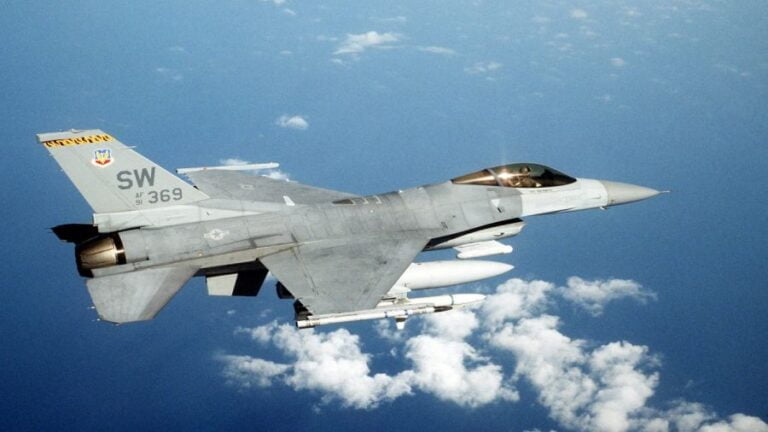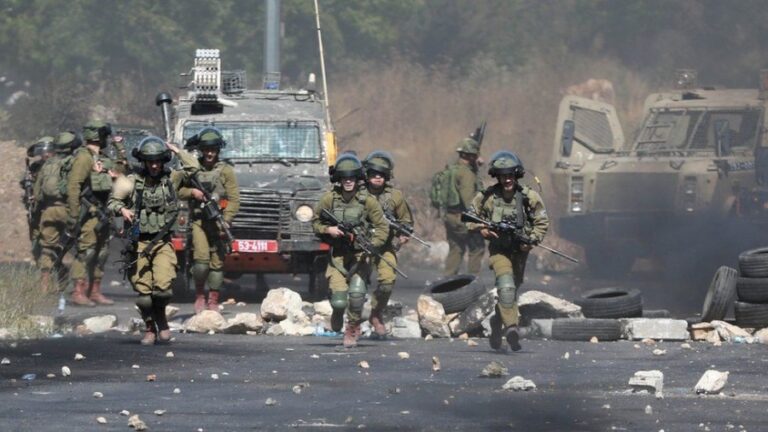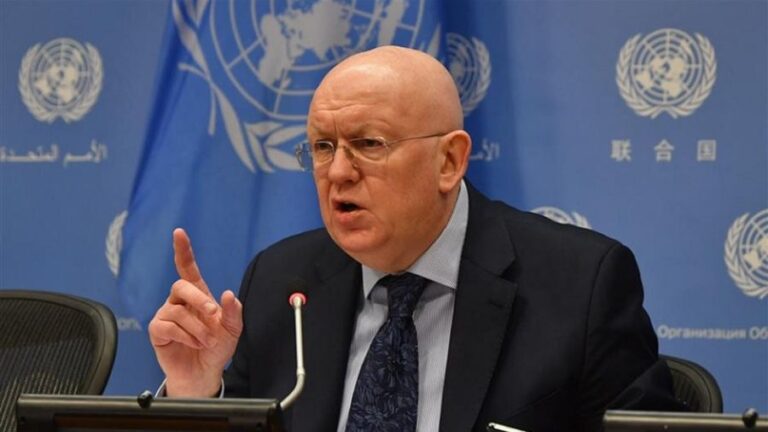Daesh is Getting Ready to Infiltrate into Central Asia from Afghanistan
Russia’s FSB Director warned that approximately 5,000 Syrian-hardened Daesh terrorists of Central Asian origin are amassing along Afghanistan’s northern border region in preparation for infiltrating back into their homelands under the cover of being refugees and labor migrants, representing a dire threat to the region’s stability that could catalyze a chain reaction of crises that might ultimately reach Russia unless the Taliban is given the intelligence that it needs to take these terrorists out and thwart that dark scenario.
Alarming News From Afghanistan
Russia’s FSB Director issued a stark warning earlier this week about the serious threat that Daesh poses to Central Asia’s stability while speaking at a session with his Commonwealth of Independent States (CIS) peers. The high-ranking security official pointed out that approximately 5,000 Syrian-hardened Daesh terrorists of Central Asian origin are amassing along Afghanistan’s northern border region in preparation for infiltrating back into their homelands under the cover of being refugees and labor migrants, noting also how some of them have already established links with organized criminal groups and are currently profiting from illegal drug, arms, and migrant flows too. This poses a dire threat to the region’s stability that could trigger a chain reaction of chaos that might ultimately reach Russia if it’s not preemptively thwarted by the Taliban as soon as possible.
“Iron First”…
For all of the Western Mainstream Media’s talk about Central Asia being “ruled with an iron fist”, the region is surprisingly vulnerable and therefore very weak, which actually explains why its governments felt it incumbent upon themselves to have as much power over society as possible in order to keep everything together. Whether it’s border disputes in the centrally positioned and densely populated Fergana Valley, informal claims on one another’s territory by ultra-nationalist diaspora groups, the rising trend of Islamic fundamentalism, Color Revolution undercurrents (especially in twice-hit Kyrgyzstan), unfulfilled economic expectations, or the largely lawless terrorist training ground of nearby Afghanistan, practically all of the Central Asian states (except for the most part Kazakhstan) are ripe for interconnected destabilizations, with only the regional catalyst missing.
…Or “Velvet Glove”?
Therein lies the very dangerous role that Daesh could play if its Central Asian members successfully infiltrate back into their homelands. Although these states are very “security-conscious”, not all threats can be dealt with kinetically (militarily), especially those related to the possible scenario of a Daesh-organized Color Revolution that exploits people’s unfulfilled economic expectations and rising desire for their traditionally secular societies to “open up” to more religious influence (as is currently happening in regional heavyweight Uzbekistan). Sometimes the “iron fist” approach is insufficient and even counterproductive depending on the context, which is why preemptive and multilateral security measures must be prioritized in order to prevent these countries’ nationals from infiltrating back into their homelands.
Multilateralism Is The Need Of The Moment
The ideal scenario would be for extra-regional Great Power Russia to coordinate this campaign between each of the Afghan-bordering states in its historic “sphere of influence”, but that might be difficult to do since only Tajikistan is a member of its CSTO mutual defense organization. Despite the fast-moving rapprochement in Russian-Uzbek relations since Karimov’s passing a few years ago and the agreement to allow Russian planes to fly over the doubly landlocked country’s territory, Tashkent still has serious reservations about rejoining the CSTO structure that it previously left out of concern that it would sacrifice its sovereignty. Turkmenistan, for its part, is a constitutionally neutral country so it would never join that bloc in the first place, but both it and Uzbekistan might feel compelled to informally allow Russia to coordinate their Afghan-directed anti-Daesh border measures with Tajikistan for maximum effect.
Forget About A Syrian-Like Anti-Terrorist Intervention
The problem, however, is that simply “containing” the problem in Afghanistan doesn’t resolve it in any way, which is why proactive kinetic measures are a must, though not in the way that the reader might immediately think. While it’s true that one of the reasons why Russia intervened in Syria was to kill the many Chechens who left to wage jihad there before they could return home and spark another conflict in the Northern Caucasus, the very fact that the US still controls Afghanistan’s skies makes it unlikely that a Russian-led bombing campaign against these border-amassing Central Asian terrorists will occur unless in the practically improbable scenario some so-called “surgical strikes” are launched for dramatic effect. The solution, therefore, is to for the Taliban to cleanse the country of this terrorist threat, something that it’s already in the process of doing.
The Taliban To The Rescue?
This genuine national liberation movement is adamantly opposed to foreign military influences of any kind on its soil, be they the US’ or Daesh’s, and has recently been embraced by the international community because of its willingness to enter into peace talks for resolving the nearly two-decade-long war in the country. That said, they’re still officially designated as “terrorists” by Russia, so despite hosting them for diplomatic talks, Moscow can’t really help them militarily. What it can do, however, is share intelligence with them (possibly via Pakistan) about Daesh’s deployments in northern Afghanistan in the hope that this could boost the Taliban’s chances of dislodging them from the region and eliminating this threat to them all. That would be both pragmatic and responsible, especially if it was paired with Russian-led multilateral border security measures among the three relevant Central Asian states.
The Worst-Case Scenario
The reason why Russia is so concerned about a terrorist threat several countries away from its own border is because Central Asia’s state fragility means that several of the countries could quickly become Syrian-like failed states if their previously enumerated vulnerabilities are expertly exploited by Daesh. This could in turn trigger a massive wave of “Weapons of Mass Migration” that might crash into Russia’s largely unprotected southern borderland, to say nothing of the many possible terrorists that might try to infiltrate into the country under the guise of refugees or labor migrants, the latter of which is comparatively easy to do because none of the Central Asian countries’ citizens need a visa for traveling to Russia for less than 90 days. Seeing as how Russia is already very systemically vulnerable to outside shocks as it is and in the midst of its own extremely taboo indigenous Muslim population boom, the last thing that it needs is for this worst-case scenario to transpire.
Reconceptualizing Inter-Regional Security
Russia’s domestic security is to a large degree dependent on Central Asian stability, which in turn is reliant on proper border security to prevent terrorist infiltration from Afghanistan. Going further, stopping terrorists at the border doesn’t eliminate the threat itself, which is why kinetic measures need to be employed, though limited in scope and politically realistic. That’s why the Taliban will likely be tasked with cleansing northern Afghanistan from Daesh, though the group’s pragmatic ties with Russia wouldn’t have been possible had it not been for Pakistan’s game-changing facilitation of these significant security contacts, which was the natural outcome of Russia’s strategic partnership with the global pivot state. While these interconnected and geographically expansive security connections might seem like “mission creep” to the unaware outside observer, the fact of the matter is that Russia’s smart leveraging of these multiple strategic relationships can be applied in pursuit of goals in which all of it partners have a shared stake such as the elimination of Daesh from northern Afghanistan.
Concluding Thoughts
Daesh might be “officially” defeated according Trump’s premature proclamation a few months ago and Putin’s own “mission accomplished” moment over a year before that, but the world’s worst terrorist organization has left a global legacy of jihadists clamoring to return back to their home countries and establish their own “caliphate franchises”, with Central Asia increasingly appearing to be just as vulnerable to a forthcoming regional crisis as West Africa currently is. The fact that approximately 5,000 Syrian-hardened members of Central Asian origin are amassing along Afghanistan’s northern border and attempting to infiltrate back into their homelands is alarming because of the very high risk that this could catalyze a chain reaction of crises that ultimately reaches as far as the Russian hinterland, which is why the FSB Director drew attention to this growing threat earlier in the week. The only realistic solution is an interconnected Russian-led multilateral defensive campaign in Central Asia paired with a Taliban-led unilateral anti-terrorist offensive that will have to be commenced as soon as possible in order to avert this looming Eurasian-wide disaster.
By Andrew Korybko
Source: Eurasia Future







